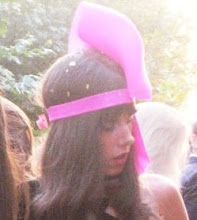









When looking through fairytale books nowadays, I can't help but noticing just how hideous most illustrations are. There are various illustration trends, all of them equally ugly: the "postmodern" illustration, usually made very obviously by computer and which just looks "fake", the "naive" illustration, which looks like the illustrator thinks children are idiots, or the "arty" illustration, of which I'd rather not speak. All those self-proclaimed illustrators should just look back to the ultimate classic of fairytale illustration (we all remember his Peter Pan and Alice in Wonderland versions), Arthur Rackham. His style, between Preraphaelite and Art Nouveau was simple, detailed, narrative, with a very airy and free trace that makes us think his characters are in a world which has less gravity. In his work, fairies and other characters, subtle and fragile but still real, bathe in the rare light of fantasy. I am not a big fan of fairies, trolls and gnomes, still Arthur Rackham's illustrations make me dream...









 When looking through fairytale books nowadays, I can't help but noticing just how hideous most illustrations are. There are various illustration trends, all of them equally ugly: the "postmodern" illustration, usually made very obviously by computer and which just looks "fake", the "naive" illustration, which looks like the illustrator thinks children are idiots, or the "arty" illustration, of which I'd rather not speak. All those self-proclaimed illustrators should just look back to the ultimate classic of fairytale illustration (we all remember his Peter Pan and Alice in Wonderland versions), Arthur Rackham. His style, between Preraphaelite and Art Nouveau was simple, detailed, narrative, with a very airy and free trace that makes us think his characters are in a world which has less gravity. In his work, fairies and other characters, subtle and fragile but still real, bathe in the rare light of fantasy. I am not a big fan of fairies, trolls and gnomes, still Arthur Rackham's illustrations make me dream...
When looking through fairytale books nowadays, I can't help but noticing just how hideous most illustrations are. There are various illustration trends, all of them equally ugly: the "postmodern" illustration, usually made very obviously by computer and which just looks "fake", the "naive" illustration, which looks like the illustrator thinks children are idiots, or the "arty" illustration, of which I'd rather not speak. All those self-proclaimed illustrators should just look back to the ultimate classic of fairytale illustration (we all remember his Peter Pan and Alice in Wonderland versions), Arthur Rackham. His style, between Preraphaelite and Art Nouveau was simple, detailed, narrative, with a very airy and free trace that makes us think his characters are in a world which has less gravity. In his work, fairies and other characters, subtle and fragile but still real, bathe in the rare light of fantasy. I am not a big fan of fairies, trolls and gnomes, still Arthur Rackham's illustrations make me dream...



























